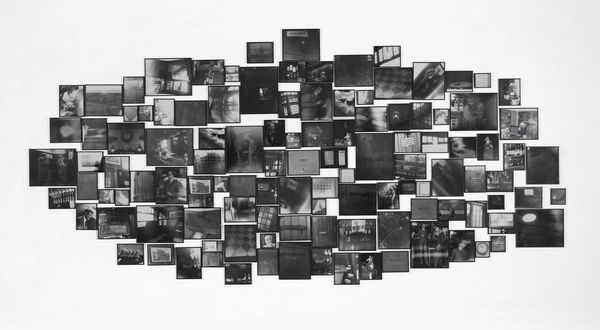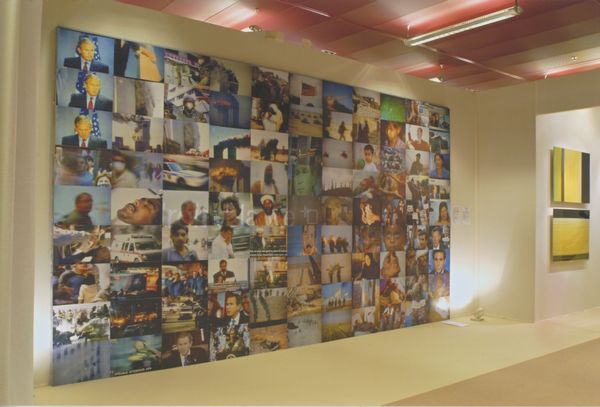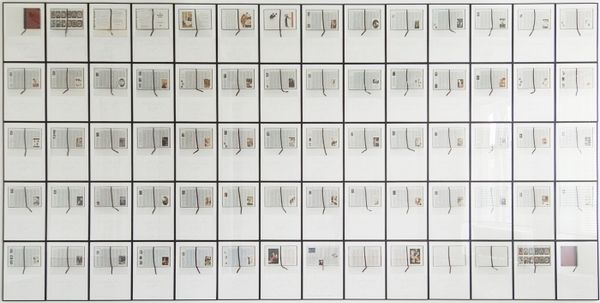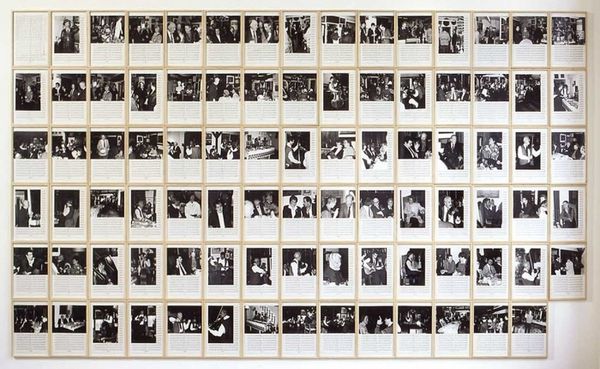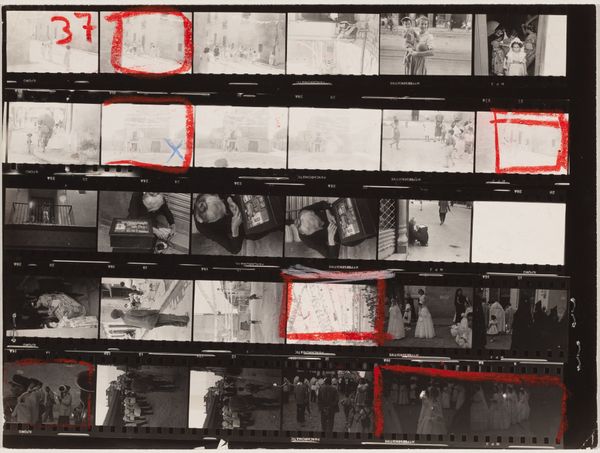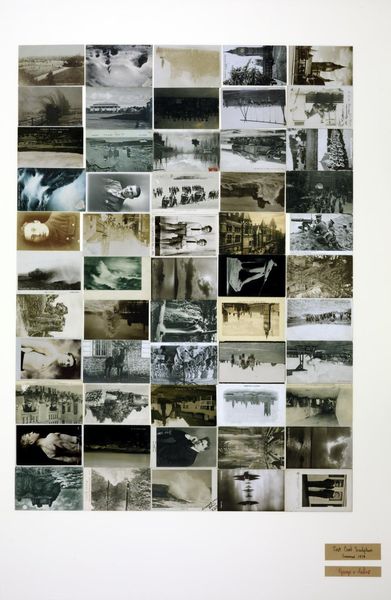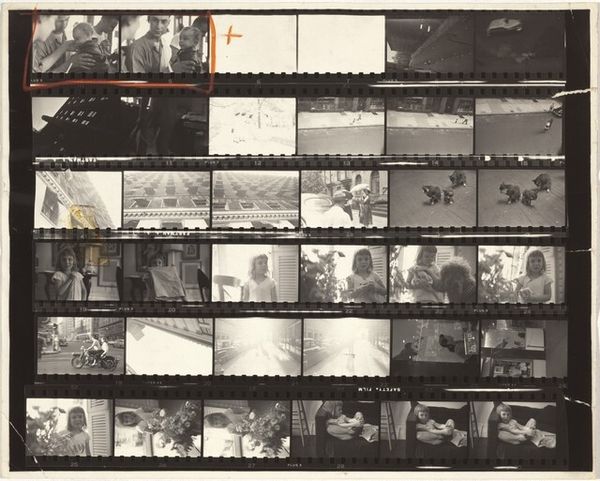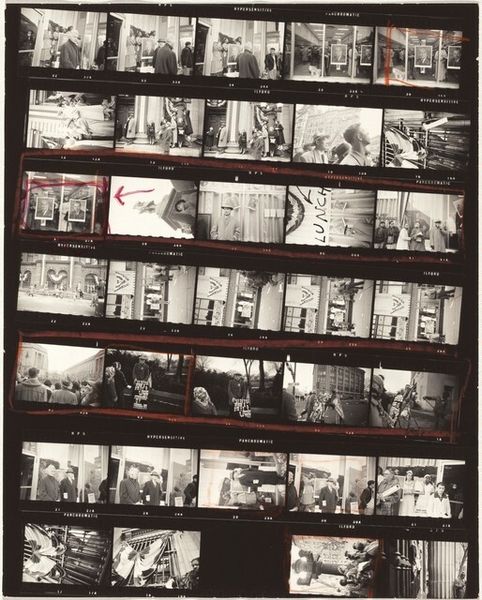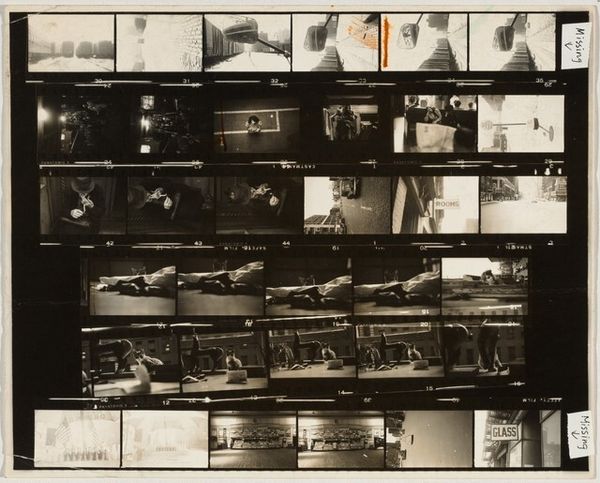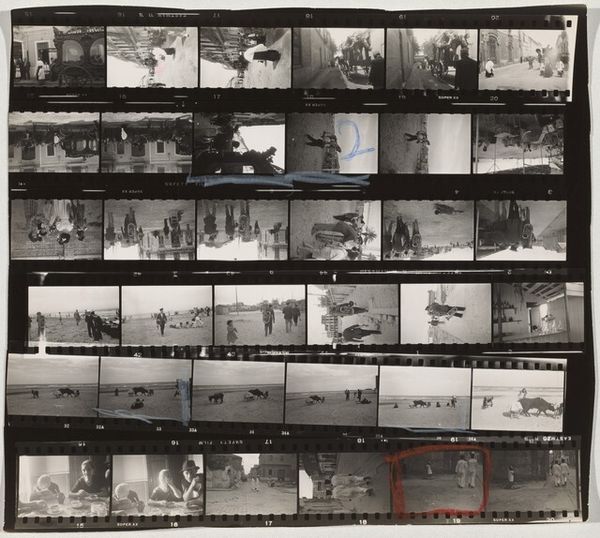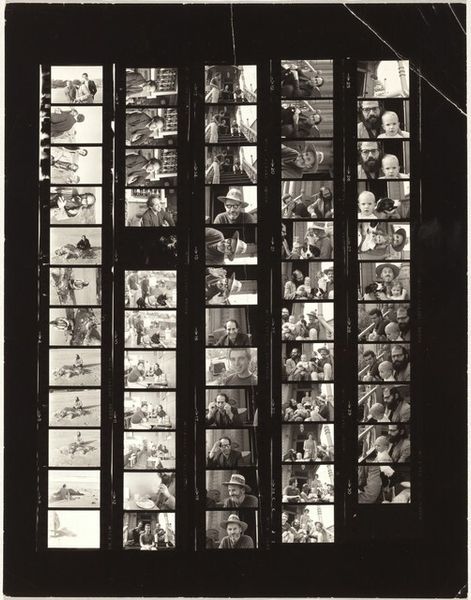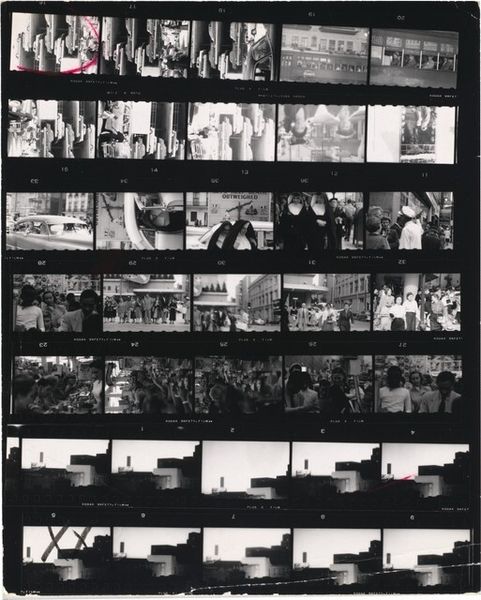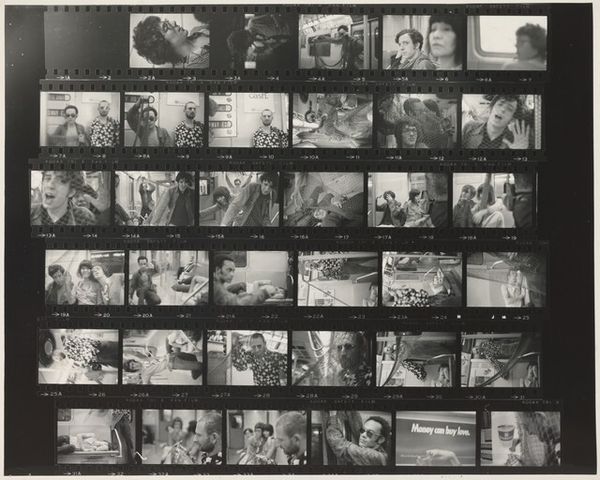
Copyright: Allen Ruppersberg,Fair Use
Curator: We're looking at Allen Ruppersberg's "Where's Al?" created in 1972, a mixed-media installation that's predominantly collage and photography. My immediate thought is how deceptively simple it appears. The sheer repetition almost lulls you into a state of calm. Editor: I agree about the simplicity but calm isn't my first reaction. To me, the grid of identical units conveys an obsessive, almost archival impulse. It begs the question, who is Al, and why this accumulation? Is it about absence or perhaps the illusion of knowing someone through fragments? Curator: Interesting. Given Ruppersberg’s ties to conceptual art and pop art, I see it more as an exploration of mass production and the very idea of authorship. Each unit, comprised of photos and text, becomes a reproducible commodity. The labor invested in creating these individual pieces versus the final seemingly effortless display makes me consider it in line with work such as Warhol’s assembly-line method. Editor: But that insistence on absence – the title implies we *should* be looking for something. Consider also that photography, from its earliest forms, was tied to memory and preservation of the dead or absent. There is this deep emotional link between the photographic image and what is missing or has been lost. "Al" takes on a significance even without context. It might symbolize loss, absence, the human condition reduced to an easily reproducible, disposable image. Curator: Perhaps. Or consider the banality of the photos, often candid snapshots, implying the ‘everyman,’ reinforcing a focus on the means of production—photography, collage, simple acts that speak volumes about the industrial age. Ruppersberg uses found or reproducible imagery challenging the cult of the original, which aligns it within Pop and conceptual art’s project of disrupting conventional methods. Editor: That reading reduces "Al" to pure materiality. Maybe there's room to see both. An emphasis on mass production does not exclude those psychological readings. I still find that accumulation hints at some deeper underlying symbolism. Curator: I suppose, and perhaps that ambiguity is precisely the point. Whether mass-produced commodity or vessel for memory, Ruppersberg delivers a surprisingly powerful image with extraordinarily basic means. Editor: Precisely. It’s a ghost in the machine; an elusive person at the intersection of industry and memory, captured through modest materials with lingering resonance.
Comments
No comments
Be the first to comment and join the conversation on the ultimate creative platform.
